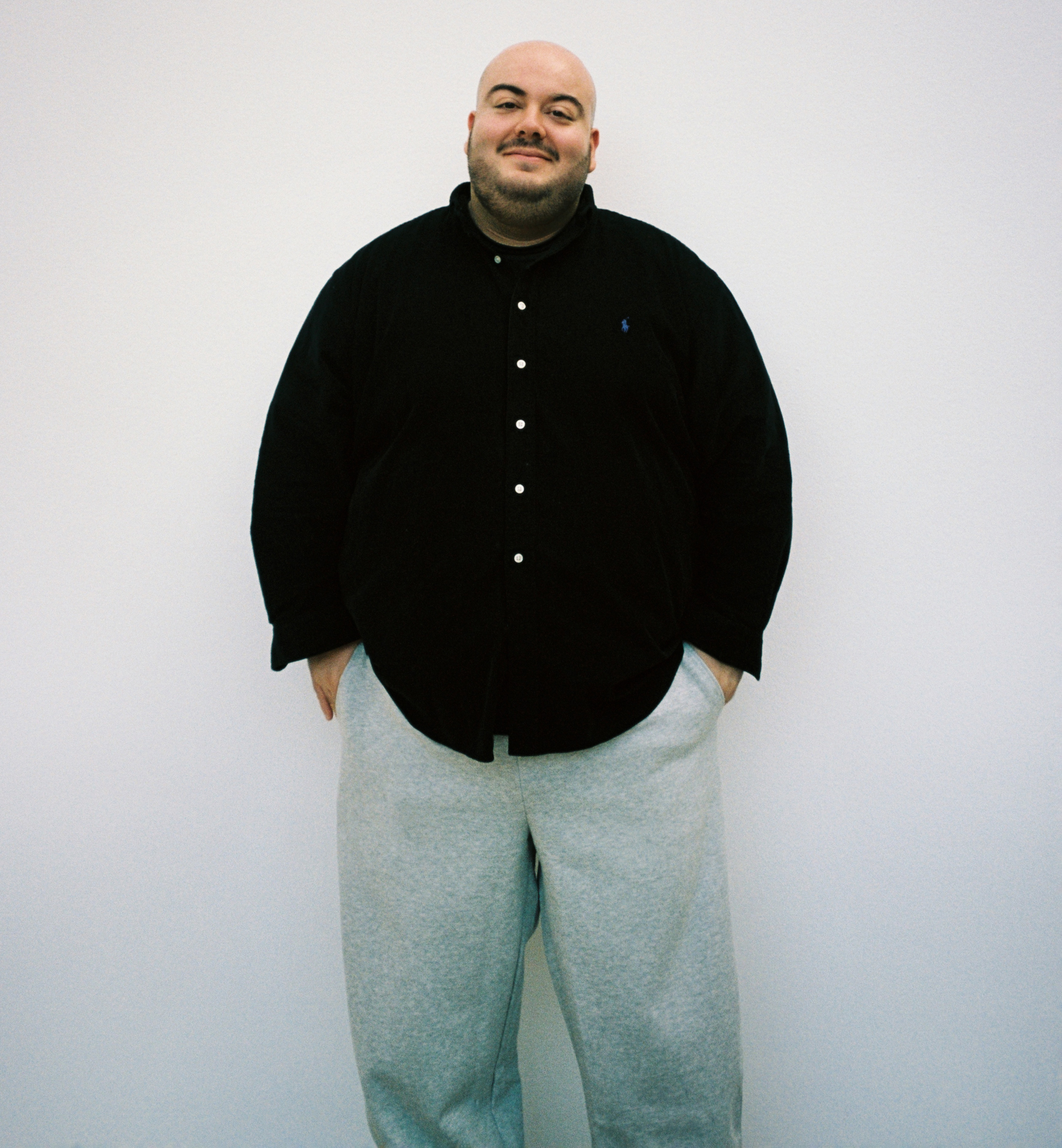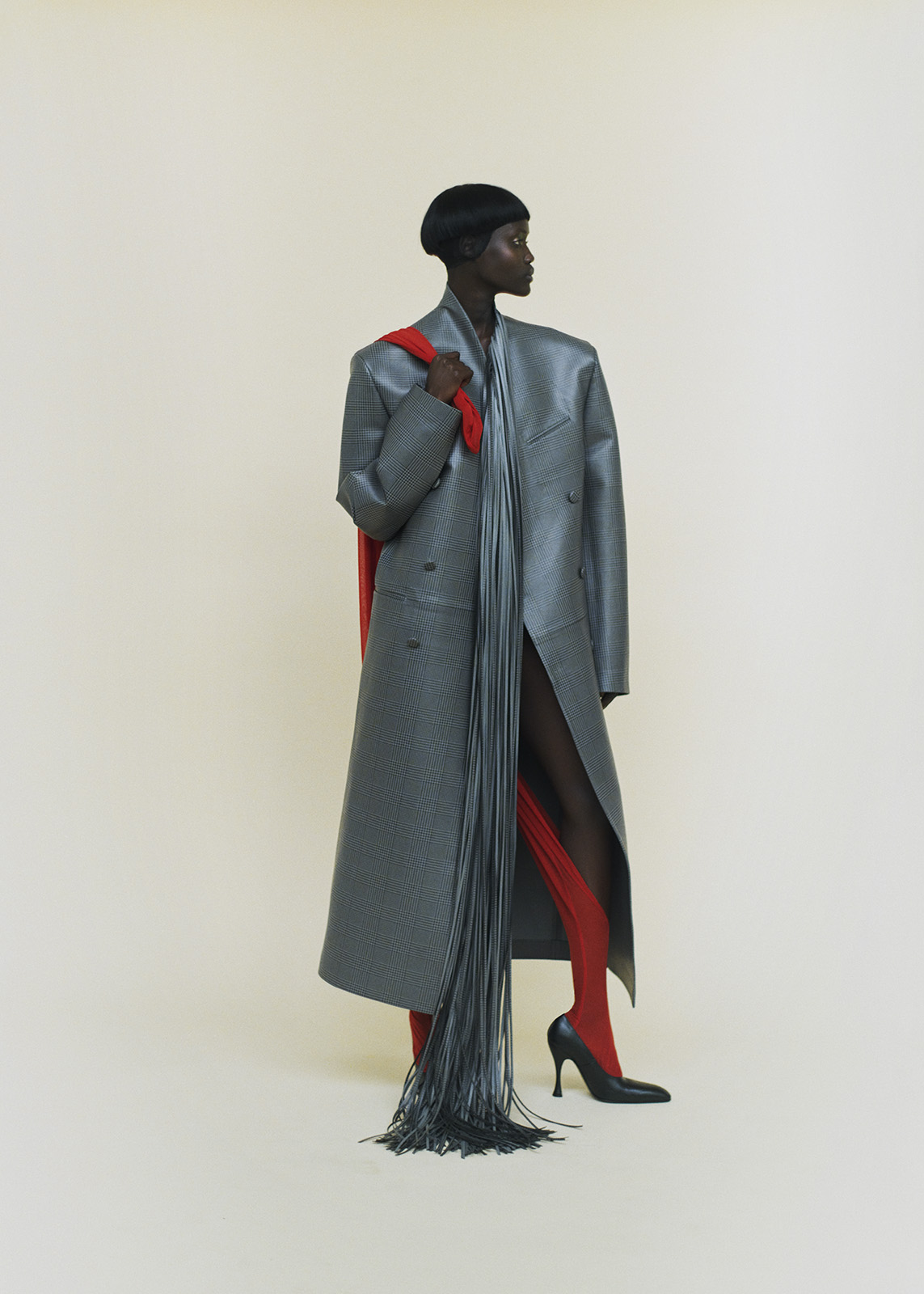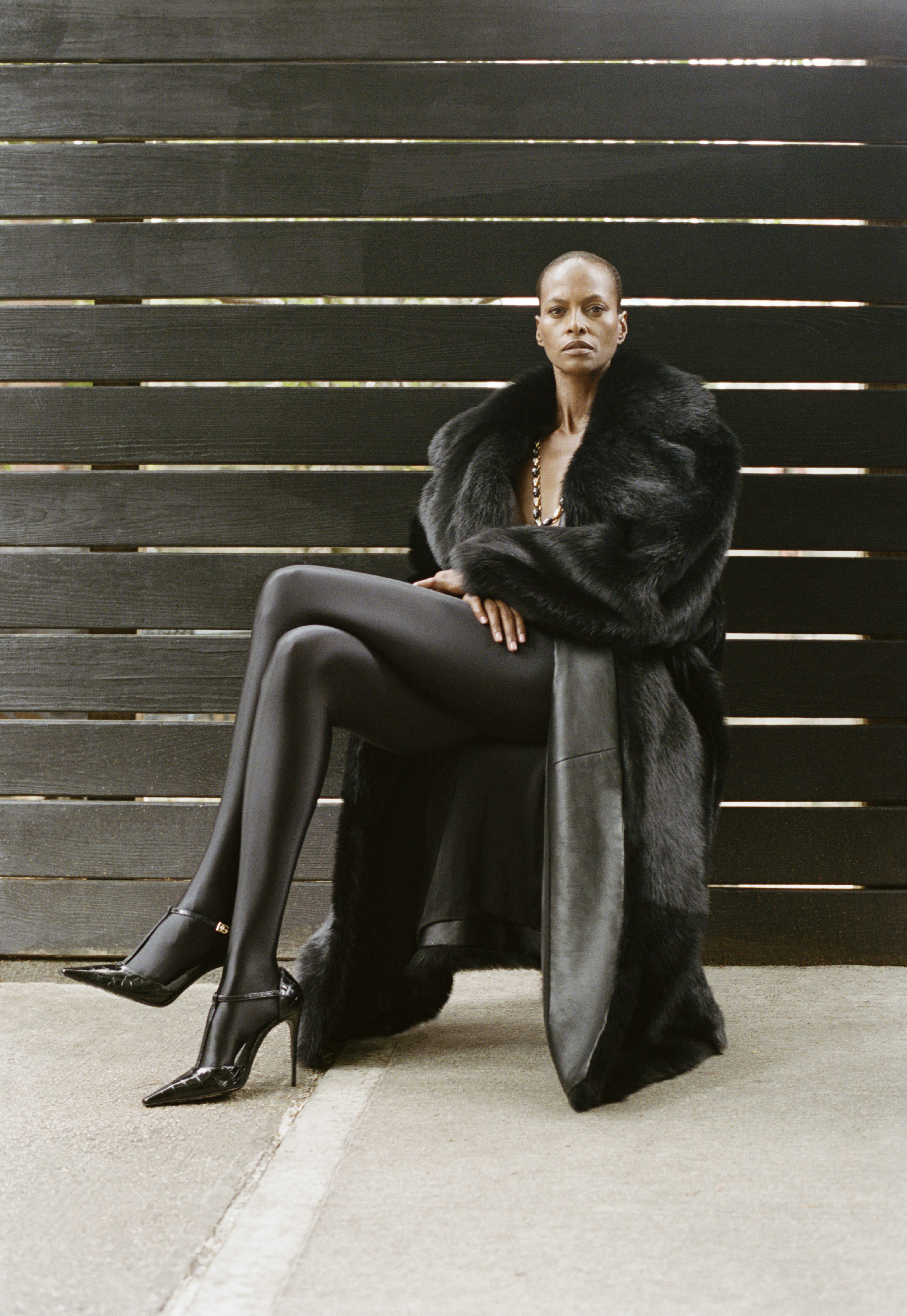Behind the Image is an ongoing MODELS.com series taking a more personal look at both established and emerging creative talent.

Dogi Nesanir by Davit Giorgadze | Image courtesy of Total Management
Dogi Nesanir, Stylist
Hometown: Berlin, Germany
Based: Paris, France
Representation: Total Management
How would you describe your work? What’s your trademark?
I would describe my work as powerful, personal, timeless, and modern. A trademark of my work would be a woman who looks like she is in full control. She is empowered, and she is wearing the clothes, not the other way around.
What sparked your interest in styling, and was there a defining moment that made you pursue it professionally?
My first love for styling definitely came through music. I’ve always been obsessed with music videos, and I remember watching Beautiful Liar by Beyoncé and Shakira when I was just 11 years old. I was instantly drawn to the styling, hair, and makeup, and that fascination never really left. A defining moment for me was being a 17-year-old, very gay, big guy in Berlin, surrounded by people who had nothing to do with fashion. At the same time, I realized that in the fashion industry, nobody looked like me, especially in the German scene. I felt like there wasn’t anyone I could look up to, so I decided to go for it myself. It wasn’t easy; there were plenty of hurdles along the way… but hey, here we are, haha.
What other jobs have you had?
So many! I once worked at a café but got kicked out after just one day because I spilled everything I touched. That was when I had just turned 14. When I turned 15, I saved up all my money and bought myself a camera. I used it to document my friends and me as club kids, going to clubs we were way too young to be in, for my blog. But hey, this was Berlin. Back then, anything was possible, even with no money. I had a Facebook page where I uploaded those images, and they quickly became part of a young movement in Berlin at the time. I gained quite a bit of popularity, which led to people asking me to photograph them, and suddenly, I was booking my own shoots. I made some pocket money pretty quickly, but it felt like a hamster wheel I couldn’t escape. In the end, I realized I loved fashion way more than photography. While doing photoshoots, I still needed a full-time job, so I worked a lot in retail. For example, I worked at Monki during the day and then in clubs at night. My last job before becoming a full-time freelance stylist, when I was 18, was at the CELINE store during Phoebe Philo’s era. My store manager at the time, Sarah, believed in me so much. Honestly, I was a natural at selling clothes. But while I had big dreams, she quickly realized I wasn’t meant for the retail world. I needed to be out there, starting my styling journey. Still, I was absolutely dependent on the money. I was always broke and wasn’t earning anything from styling yet. So she gave me some tough love and basically fired me the day after I’d done a styling gig and a magazine editorial, which, at the time, felt like I’d just shot a Chanel campaign, haha. I knew nobody was waiting for me out there, but still, that ended up being the push I needed. I went out and started finding styling work. To this day, I have no clue how I did it, but the jobs just started coming in. You build on each one, people start hearing your name, and somehow, it all falls into place. I believe consistency is the key.
What non-fashion influences (art, film, literature, music, etc.) shape your creative perspective?
I’m really influenced by music and subcultures, especially traditional ones. For example, Turkish and Kurdish folklore is something that still inspires me to this day. The Middle Eastern music scene, from the 1920s to now, continues to be a major source of inspiration for me. Female rap and women artists, in general, have also had a huge influence on my work, empowering me to embrace boldness, confidence, and unapologetic self-expression in every look I create.
You’ve collaborated with Doublet for the past few seasons. What draws you to the brand creatively, and how has your collaboration evolved over time?
Ino-san (Masayuki Ino), the creative director of Doublet, and I couldn’t be further apart in terms of aesthetics, but that’s exactly why I’m so drawn to him and the brand. It’s a love affair between two energies that, when aligned and combined, create something truly new and fresh. I’m in awe of his creativity and his mind. He’s definitely someone I respected before, but after working with him season after season, my respect has turned into an obsession with what he’ll present next. Then I get to spin it, sometimes even tear it apart, and he loves that. He enjoys that I come in with the sole purpose of elevating the entire message and offering a perspective no one would ever expect from Doublet. We’ve come a long way together. The beginning was very different from where we are now. I really appreciate his blind trust in me, and I also value that our way of working is honest and healthy. If one of us isn’t sure about something, we challenge each other to make sure we get the best possible outcome. That’s how we approach every season: with an open mind and the trust that the result will look nothing like our first “style-out” day. We usually change a lot during the casting process and adapt to each model and character. That’s why Doublet is so special. Nothing is ever as expected.
What have you watched/heard/read lately that has inspired you?
I went to see the amazing show Eyes Open in the Dark by Peter Hujar at Raven Row in London while I was there for work, and it truly blew my mind. Although he’s less known than his peers from the ’80s, he was an incredible queer photographer from New York who inspires me in my work a lot.
Your work often has a sculptural quality. How do you think about silhouette and structure when putting together a look?
My process usually begins with a classic silhouette and feel. Once I have that foundation in place, I start to question what I want to transform it into—without making it too surreal or unrealistic. One of the best compliments I often get is from people saying they can envision themselves wearing the look I created, even if it’s not traditional. I always aim to keep my thought process realistic and relatable. For me, it has to feel natural. Or, if I want it to feel staged, the goal is for it not to feel intentionally natural. I don’t really like grey areas. I either love something or usually hate it—haha. It’s a strong statement, but the silhouette and structure of a look have to evoke either love or hate for it to feel right to me.
What’s been the most challenging moment in your career, and what did you take away from it?
I believe we’ve experienced a generational shift in gatekeeping. Somewhere along the way, it became something truly amazing, allowing people to finally showcase their talents on bigger platforms. However, I also believe that new gatekeepers from this generation have emerged, still playing what I like to call “industry politics.” For me, motivation and compassion are the driving forces behind my daily efforts to reach new goals and set higher standards for myself. At the same time, I’m extremely critical of my own work and go through periods of intense self-doubt. And when I tell you imposter syndrome is real at certain times of the year, it’s an understatement. I want to be transparent because I feel there haven’t been enough honest conversations about these struggles. On social media, everything looks perfect, and it’s become a place where everyone hides behind their screens, making it hard to see what’s really going on. I’ve realized that by being honest, consistent, and showing compassion for others, you can still climb out of the holes you sometimes dig for yourself by spending too much time on social media. Once I understood my own value in my work, it all started to make sense.
Who do you think is one to watch?
My friend Roxane Dia. She’s an amazing casting director and one of the best people I know, talented and kind. Those are the ones to watch, like Roxane!
Selected Work

Malgosia Bela by Davit Giorgadze | Image courtesy of Total Management
Re-Edition SS25 cover story featuring Malgosia Bela
I love this image because it feels quintessentially me. I started styling when I was 18, and back then, I didn’t have the resources, the network, or the opportunities that I have today, but I was always mixing very unconventional and rather eccentric pieces with chic elements to create something that, in my mind, always made perfect sense. As Madonna once said, “I can be spiritual and still shop at Prada!” I’ve never liked being put in boxes, and I usually break right through them.

Yar Aguer by Ola Rindal | Image courtesy of Total Management
Document Journal SS25
I love this look because it shows that something as simple as a stocking can become a key piece, pulling the entire outfit together and elevating it. It does a great job of bringing the sculptural quality of the coat to life while adding a pop of color.

Karolin Wolter by Davit Giorgadze | Image courtesy of Total Management
Karolin Wolter for the cover of Re-Edition magazine AW24
This picture and style represent me really well because I love to layer pieces and create shapes. I very rarely use one piece by itself, but this coat was the picture for me. There was nothing to add to Karolin (Wolter’s) look and stripped-back glam, aside from a very loud yet calm coat with faux fur and faux croc print that brought the whole image together.

Yasmin Warsame by Davit Giorgadze | Image courtesy of Total Management
Cool Front for Harper’s Bazaar U.S.
To me, this is a way to show my version of a new and modern luxury. From the moment I met Yasmin (Warsame), I was in awe of her presence and character—she is the definition of a model who brings a look to life. She embodies elegance with such effortless ease, which, in my work, is the number one goal: that women feel inspired by it and feel seen.

Hejia Li by Pegah Farahmand | Image courtesy of Total Management
Document Journal SS25
My work often revolves around sculpting and layering, so this feels like the best representation of a balanced “too much.” It’s the perfect example of how I like to take something that initially feels very eccentric and turn it into something chic and relatable.

By Cihan Öncü | Image courtesy of Total Management
COKYASAR
My late cousin Hasan was photographed for Indie Magazine while I was the fashion director at the time. This was part of a major portfolio project in which I returned to my roots in Kahramanmaraş, Turkey, the rural village where my family originates. My goal was to capture and style my family in a way that would leave a lasting impression on people’s memories. Pictured next to him is my grandmother, dressed in Phoebe Philo-era Celine. This was at the beginning of the “street casting” trend, but for me, it wasn’t a trend. It just made sense. Tragically, Hasan passed away in the devastating 2023 earthquake that struck southeastern Turkey and hit my hometown very badly. I will forever cherish the memories we have from this project together. It feels extra special knowing he was part of it.







